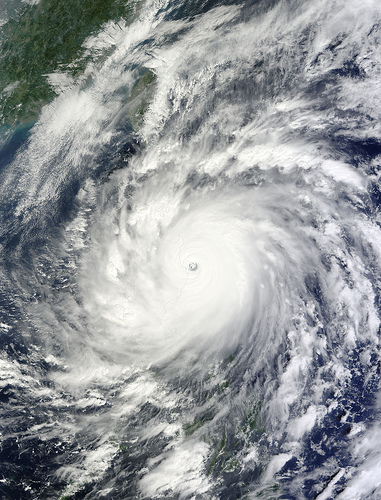 As venue professionals we are all aware of Severe Weather Season. It’s the time when Mother Nature ramps up the likelihood of a severe weather incident, and it typically runs March to August. While once isolated to a few months, severe weather has now become a full-time concern, and the severity of storms has seemingly increased. This up-tick in destruction isn’t all in our heads, fed by social media and personal accounts captured on camera phone video. It’s real and you better buckle your seatbelts and batten down your venue’s hatches.
As venue professionals we are all aware of Severe Weather Season. It’s the time when Mother Nature ramps up the likelihood of a severe weather incident, and it typically runs March to August. While once isolated to a few months, severe weather has now become a full-time concern, and the severity of storms has seemingly increased. This up-tick in destruction isn’t all in our heads, fed by social media and personal accounts captured on camera phone video. It’s real and you better buckle your seatbelts and batten down your venue’s hatches.
A recent USA Today story about a Proceedings of the National Academy of Sciences report shows that deadly and destructive thunderstorms, and the violent tornadoes they produce, are forecast to see a “robust” increase across parts of the U.S. in upcoming decades because of climate change. While most previous research has been inconclusive, this study is one of the first that’s found a solid link between climate change and severe storms.
“Springtime severe thunderstorms could increase by as much as 40 percent over the eastern U.S. (roughly from the Rockies to the Atlantic) by the end of the century,” says lead author Noah Diffenbaugh of Stanford University.
In addition to spring, the study also predicts an increase in storm days in winter and fall as well. Overall, for the entire year, the researchers forecast an increase in severe storms of 25 percent to 30 percent.
In recent years, severe storms and tornadoes have produced more destruction than any other weather phenomena and are typically one of the main causes of catastrophic losses in the U.S. Of the 11 weather disasters in 2012 that led to at least $1 billion in damages, seven were caused by severe thunderstorms and tornadoes.
Is your venue prepared for severe weather? It is a fundamental responsibility of all venue managers and staff in protecting the safety of guests, event personnel, and employees, as well as the assets of the venue. Don’t get caught unprepared.
Here are a few tips to prepare for Severe Weather Season before it arrives:
- First and foremost, have a severe weather preparedness plan to include a course of action to be taken for different severe weather threats.
- Establish a Severe Weather Emergency Team with someone in charge who can make necessary decisions.
- Monitor weather forecasts every day and more frequently as periods of severe weather approach.
- Know the differences between outlooks, watches, and warnings.
- Develop a decision “Trigger Chart” so that you know, in advance, what action to take for each type of severe weather threat.
- Have a contract with a private meteorological firm to provide pinpoint advice for the specific geolocation of your venue or event.
- Know what types of shelters are best for different severe weather threats.
- Know where a safe shelter is located for each type of severe weather threat.
- Have methods to communicate to all attendees at all times.
- Build relationships with your local National Weather Service Forecasting Office’s Warning Coordination Meteorologist.
- Build relationships in your community with all first-responder agencies, the local emergency operations center manager, and the media.
- After every severe weather event, hold a debriefing and establish an after-action report for how to improve in the future.
- Make safety and security of those attending your events the primary concern over “the show must go on” issues.
- Finally, NEVER let monetary issues dictate making the right decisions to protect the safety and security of those who are attending public events at your venue.
For a more in-depth understanding of severe weather, planning and preparedness, legal issues, crowd management issues, and much more you should attend IAVM’s Severe Weather Preparedness for Public Assembly Venues and Events held at the National Weather Center in Norman, Okla., March 4-5, 2013. By partnering with the National Weather Center, one of the country’s premiere weather facilities, IAVM is able to deliver venue and large event specific training and weather preparedness techniques from experts in the both the venue and the weather industries.
Register today, space is limited for this program. Visit IAVM.org/weather to learn more.
(photo credit: NASA Goddard Photo and Video via photopin cc)
